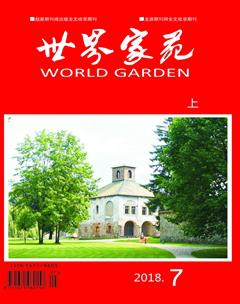Difficulties and countermeasures faced by Chinese students in Australia
A vast majority of Chinese students in Australia struggle to acclimate to the local lifestyle.This essay interrogates the obstacles which Chinese students may confront in Australia,accounting for social difference and interaction,lack of proficiency in foreign language,diversity in education,as well as adapting to Australian food and diet.Accordingly,this essay investigates the ways that engagement can hamper foreign students active participation in class,and suggest ways to mitigate against these challenges.
There is increasing interest in the phenomena of Chinese mobility and increasing demand for high-quality education.Little is known,however,about the social experience of Chinese students in Australia.Conventional Chinese culture is euphemistic,while in Australia,Chinese students are required to express explicitly what they are short of at hand or what they prefer actually.Additionally,forming friendship with domestic students is often identified by Chinese students as a difficult experience(Wang,Whitehead,& Bayes,2017).Although most Chinese students recognize that social engagement is perceived to be of great importance for a successful learning experience,this is often rare and tough for them to achieve effectively.Chinese students poor social life can be partly attributed to their perceptions of local staff.Frustratingly,from the Chinese international students perspective,domestic students may not be interested in working with them(Wang,Whitehead,& Bayes,2017).Chinese students capability to embrace new culture and integrate within the local community can have a direct impact on their social and educational outcomes(Cross,2006).
Unfamiliarity with language is a defining challenge for most Chinese students in Australia.The role of the language barrier is significant as it can withdraw enthusiasm for communication with local students.This hindrance can potentially reduce their confidence in autonomous learning and result in being disengaged.Luzio-Lockett(1998) agrees,indicating that the restriction of international students language abilities combined with emotional and situational difficulties can limit their academic performance and,consequently,affect overall educational and social outcomes.The English they have previously received in China mainly places emphasis on reading and writing with minimal attention to listening and speaking.With regard to lectures,only 60% of what is being said by instructors in Australia can be comprehended according to students(Briguglio & Smith,2011).Chinese students can find it particularly difficult to concentrate on what the lecturer is saying at the same time when they are trying to read the notes as juggling both may be challenging.Some local phrases and slang is exceedingly difficult to understand,where overwhelmingly the Chinese response is a need to improve their speaking and listening skills.Keen to achieve academic success,Chinese students in Australia can learn previewing,in an attempt to familiarize themselves with the content and with any terms related before the lectures.Aware of the need to upgrade their proficiency in English,Chinese students should be determined to make changes to adapt to Australian universities.
Australian university assessments comprise a combination of exams,assignments and involvement in learning projects,which may challenge Chinese international students who are mostly accustomed to completing exams.Further,Chinese international students may accomplish preparatory English study in China,where it is inevitable for them to compare their learning experience at home with that at an Australian university.The difference in educational approaches between Australia and China is significant for most Chinese students.Due to the lack of familiarity with the new educational approach,their learning can be significantly blocked and impeded.In Australia,students are expected to learn independently,openly,and in an engaged manner.Free time is certainly not easy to handle for Chinese students as they have no experience before(Briguglio & Smith,2011).The diversity in education is a great issue existing for a group of Chinese international students studying at an Australian university,suggesting them to convert the Chinese traditional exam-oriented English learning mentality.
Adapting to Australian food and diet challenges an increasing number of Chinese international students.As traditional Chinese food becomes less available during studying abroad,Chinese international students may be hard hit.They may find it intolerable to acclimate to local food and diet,accounting for aspects of taste,familiarity,together with personal preference.
For the sake of absorbing essence from western countries,studying aboard indeed broadens Chinese international students minds and provides more learning and working opportunities for them,while it is undeniable that more potential issues emerged in terms of social difference and interaction,lack of proficiency in foreign language,diversity in education,as well as adapting to Australian food and diet,which drives students to be frustrated and disengaged in Australia.This essay examines that the problems above prevent Chinese international student from understanding intercultural context,successful interaction between faculty and students,adapting to new academic environment,and acclimate to local diet.Pursuing high-quality education is an essential part of a students life.Apparently,for a Chinese international students,in order to alleviate his own struggle in acclimating to Australian lifestyle,there is room for longitudinal preparation and research in a vast majority of areas before going to Australia.
作者簡介
张娴(1997—),女,汉族,浙江绍兴人,学生,本科,单位:浙江师范大学文化创意与传播学院广告学专业
(作者单位:浙江师范大学文化创意与传播学院)

